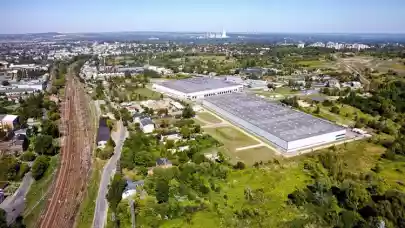
In 2019, five out of the ten European markets with the highest logistics rental growth were located in CEE. Last year, net effective rents rose more than 5% for Europe as a whole, the highest level ever recorded. This growth is driven by headline rent growth as, after several years of concession reductions, many markets across Europe are currently at very low levels of incentives such as free rent. Prologis published its Logistics Rent Index.
The Prologis Logistics Rent Index examines trends in net effective market rental growth in key logistics real estate markets in North America, Europe, Asia and Latin America. To produce the index, Prologis Research combines local insights on market pricing with data from the company’s global portfolio. Rental figures at regional and global levels are weighted averages based on estimates of market revenue.
Key Findings:
- North America and Europe led 2019 growth. Rent growth outperformed long-term trends by 2-3x.
- Growth was broad-based. Three-quarters of markets showed growth between 2-8%.
- Location premiums increased, due to low vacancies and rising replacement costs. Rent growth varied at the submarket level, where Last Touch locations are in demand.
- Local market balance outperformed uneven economic conditions. For example, Germany and Brazil achieved 6% rent growth.
- Trade policy has had limited impact. For example, gateway markets in the U.S., Europe and China performed above-trend, a testament to the resilience of the consumer markets.
- Supply risks were contained. Only a handful of supply-risk submarkets showed rental declines in 2019 (i.e., East Midlands, Guadalajara, Central Pennsylvania, Chongqing and Shenyang).
Looking to 2020:
- Uncertainty around economic conditions and geopolitics will continue. Progress was made on trade issues (Brexit, NAFTA and U.S.-China Phase 1) in 2019, but much remains to be settled. Although leasing decisions have not thus far been affected, dampened sentiment is an important watch-point.
- Structural factors should support strong demand. Even during times of uncertainty, logistics customers keenly understand that their competitive advantage is tied to a modernized supply chain. There is no reason to think this sentiment will change.
- Labour continues to be a challenge. Access to transportation nodes is a key criteria not only for operational excellence but also for staffing.
- Interest rate declines could impact development economics. Developments may become more feasible, yet land sourcing will remain a key barrier.
- Major consumption markets are likely to record strong rent growth. The intersection of the need to lease space near end consumers and high barriers to supply puts upward pressure on rents for highly functional spaces.
What does it mean for customers?
Availabilities should remain limited in most markets in 2020, making it even more imperative for logistics users to plan well in advance to secure space. The best locations and buildings will achieve operational efficiencies in the form of reduced transportation costs (time and distance) and access to labour.
What does it mean for investors?
As logistics users modernize their supply chains with data that provides visibility into their networks, rent premiums for desirable micro-locations are growing as these sites produce operational efficiencies. Structural supply constraints (i.e., land) will foster rent outperformance in both the near and long term.
Summary for Europe
The strongest rent growth in history happened in 2019. Net effective rents rose more than 5% for Europe as a whole, the highest level ever recorded. This growth is driven by headline rent growth as, after several years of concession reductions, many markets across Europe are currently at very low levels of incentives such as free rent.
Historic low vacancy and rising replacement costs fueled growth. Operating fundamentals remained strong in 2019. New supply in line with robust demand produced a vacancy rate of only 3.7% in Europe—the lowest among global peer regions. Land scarcity is only increasing in the markets that matter most. Furthermore, replacement costs continued to rise briskly, driven by construction costs and land prices. In turn, development underwriting incorporates higher rental rates to achieve required returns.
The European continent experienced outsized growth of 6%+ for the third consecutive year. Two notable rent trends emerged in 2019. First, mature markets such as in Rhine-Ruhr, Southern Netherlands, Stockholm and Prague saw continued strong rent growth. Upbeat sentiment and scarcity pushed rents higher in these markets. Second, growth materialized in markets that are still in the early phase of the rent cycle, including those in France, Italy and Poland. Improving market conditions and rising replacement costs together are putting upward pressure on the relatively low rents found in these markets. Interestingly, seaport markets with an exposure to global trade recorded solid growth, as well. Rotterdam and Hamburg, one of Europe’s largest container hubs, posted growth above 6%. These markets have shown resiliency due to land scarcity and deep, diverse demand despite recent trade tensions.



